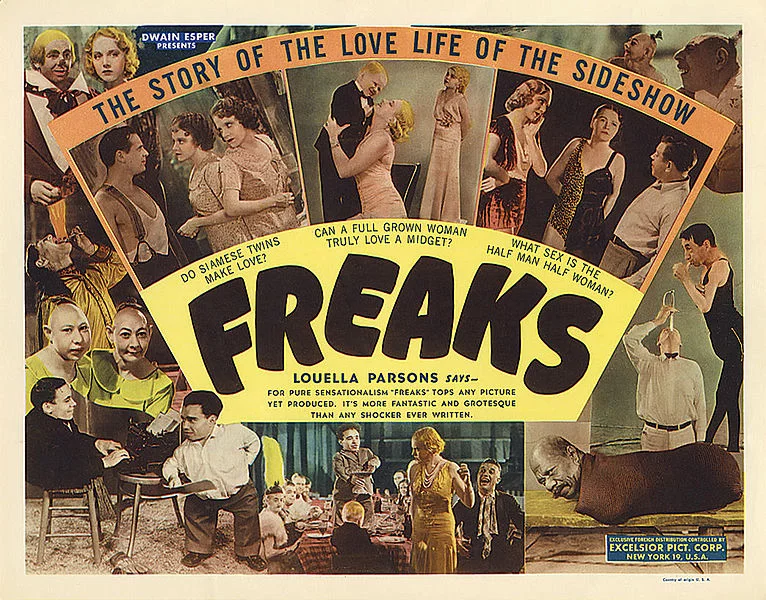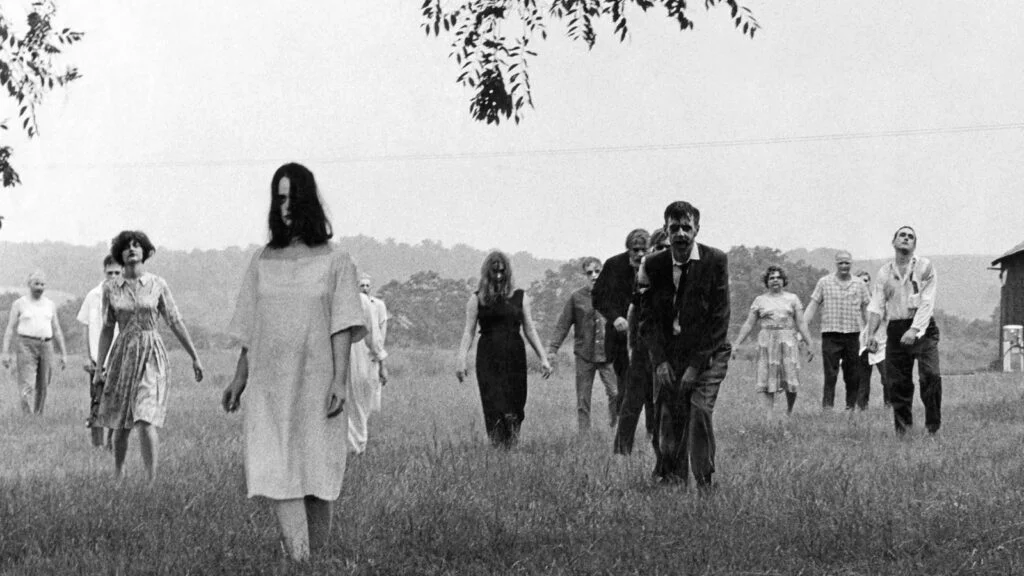Scaring people with tales has been a human hobby since ancient times, with much folklore focusing on things that create unsettling noises at night—especially supernatural events or anything that plays on our natural fear of death. Given this rich history in both literature and oral storytelling, it’s not surprising that the first horror film emerged shortly after the birth of cinema.

The First Horror Movie: What Was It?
Throughout the past century, horror in film has experienced numerous highs and lows, leading us to the somewhat debatable era we currently inhabit. The history of horror as a cinematic genre begins, as is often the case in film history, with the works of Georges Méliès.
A few years after the emergence of early filmmakers in the mid-1890s, Méliès produced “Le Manoir du Diable,” also known in English as “The Haunted Castle” or “The House of the Devil,” in 1896. This film is widely regarded as the first horror movie. Lasting three minutes, it features cauldrons, animated skeletons, ghosts, transforming bats, and ultimately, a representation of the Devil. Although it wasn’t designed to be frightening—rather, it aimed to evoke wonder, which was Méliès’ style—it remains the first film (rediscovered in 1977) to incorporate supernatural elements, setting a benchmark for future works in the genre. While the future of horror remains uncertain, reflecting on the extensive journey we’ve taken to reach this moment can be enlightening.
The Literary Years
Following the release of the first horror movie, there was a surge of supernatural-themed films between 1900 and 1920. Many filmmakers, still experimenting with this emerging genre, looked to literary classics for inspiration. During this early period, Edison Studios released the first adaptation of Frankenstein, alongside adaptations of Dr. Jekyll and Mr. Hyde and The Werewolf (both of which are now lost to history). This marked the beginning of a significant evolution in horror cinema as we transitioned into…

The Golden Age of Horror
Often regarded as the pinnacle of the genre, the two decades from the 1920s to the 1930s produced numerous classics and can be distinctly divided into the silent film era and the talkies.
In the silent era, landmark films such as The Cabinet of Dr. Caligari (1920) and Nosferatu (1922) emerged, marking the first attempts to genuinely disturb audiences. Nosferatu is particularly notable, being listed among Rotten Tomatoes’ best horror films of all time and establishing many of the vampire tropes we recognize today.
As the silent era transitioned into sound, a wave of remarkable films emerged that would influence future generations, especially in the realm of monster movies. Notable titles included the second adaptation of Frankenstein (1931), The Mummy (1932), and the first color version of Dr. Jekyll and Mr. Hyde (1931).
The 1930s also marked the first use of the term “horror” to categorize this genre, which had previously been seen as romance melodrama with darker elements. This period witnessed the rise of horror stars, with Bela Lugosi, known for his role in Dracula, being one of the first actors to specialize exclusively in horror films.
As the genre began to unsettle viewers, it also sparked concern among the public, leading to increased censorship and outcry with each new release. A prime example is Freaks (1932), a film so shocking at the time that it underwent extensive cuts, with the original version now lost. Director Tod Browning, who previously achieved great success with Dracula, found his career suffer due to the controversy surrounding Freaks.
The shock value of Freaks remains impactful even today, making it a deeply disturbing viewing experience.

The Atomic Years
Freaks was banned for thirty years in the country that truly flourished during this time: Great Britain.
Although the Hammer horror company was established in 1934, it only began to produce films in abundance during the 1950s. When it did, it achieved near-global dominance, aided by a profitable distribution agreement with Warner and other U.S. studios. Once again, adaptations of Frankenstein, Dracula, and The Mummy helped establish the company’s reputation, followed by a series of psychological thrillers and television shows.
Additionally, it’s essential to acknowledge Alfred Hitchcock when discussing British horror. He played a crucial role in laying the groundwork for the slasher genre, which will become more prominent as we progress through the timeline.
Another significant characteristic of the horror landscape in the 1940s and 1950s emerged as a reflection of the era. With war ravaging Europe and widespread fears of nuclear fallout, it was only natural for horror films to feature antagonists that were less supernatural. Themes of radioactive mutation became prevalent in films like The Incredible Shrinking Man and Godzilla, while the fear of invasion was explored in popular films such as The War of the Worlds and When Worlds Collide, both released in 1953.
The latter film heralded the initial stirrings of the “disaster” movie genre, although it would take a few more decades for this trend to fully develop.

The Gimmicky Years
3D glasses? Electric buzzers installed in theater seats? Paid actors in the audience to scream and pretend to faint? During the 1950s and 1960s, filmmakers experimented with various gimmicks to heighten the fear factor for cinema audiences. This trend towards interactivity also permeated other genres during this time but quickly faded, partly due to the high costs involved. For horror, this shift led to an influx of incredibly low-budget productions.
From the late 1960s onward, the American demand for gore became insatiable, resulting in slasher films produced for under $1 million being churned out at a rapid pace. However, this era also saw the creation of some masterpieces; notably, George A. Romero made a significant impact by pioneering the zombie genre with Night of the Living Dead in 1968, which was made for just over $100,000. The film went on to earn $30 million, and in its wake, the living dead phenomenon was born.

All Hell Breaks Loose
The 1970s and 1980s saw a surge in occult-themed horror, especially stories involving houses and children possessed by the Devil. This cultural fixation on religious evil during this era could easily warrant its own in-depth analysis, but in the context of cinema, we can distill the trend into two significant films: The Exorcist (1973) and The Omen (1976). Supernatural horror was firmly back in style, drawing inspiration from its cinematic roots, with literature once again serving as a wellspring for material. This time, however, the source was not a long-dead Victorian author but contemporary writer Stephen King.
Carrie (1976) broke new ground, followed by The Shining (1980), with Poltergeist (1982) adding to the supernatural horror landscape shortly after. With these iconic films now established in horror history, the groundwork was set for…

The First Horror Movie Slashers
If there’s one defining trope of the 1980s, it is the slasher format—featuring a relentless villain stalking and murdering a group of young people in increasingly creative ways, one by one. The genre arguably began with The Texas Chain Saw Massacre in 1974, leading to a surge of similar films over the next decade. For every ten typical slashers, there was usually one film that would become a cult classic, even if it received mixed reviews at the time. Halloween, Friday the 13th, and A Nightmare on Elm Street stand out as the most notable examples, achieving such success that they spawned long-running franchises—marking the first instance in horror history where multiple sequels became commonplace.
Numerous imitators and knock-offs emerged, especially those themed around holidays. While some were of higher quality than others, the genre often leaned into kitsch. Similar to early horror films, these movies were more focused on entertainment than on inducing genuine fear.

The Doldrums
After being worn out by a slew of clichéd slasher films and their sequels, the horror genre began to lose momentum as it entered the 1990s. The rise of computer-generated special effects led to a series of disappointing CGI monster movies that failed to rejuvenate the genre, including Anaconda (1997) and Deep Rising (1998). However, it was a comedy that ultimately turned things around. Peter Jackson’s early filmmaking venture pushed the splatter subgenre to absurd limits with Braindead (1992), while Wes Craven’s slasher spoof Scream (1996) received worldwide acclaim and success.
Overall, the genre trudged into the 2000s with little excitement, apart from a few box office hits. Nonetheless, the zombie subgenre made a significant comeback during this decade, likely fueled by the immense popularity of Max Brook’s novel World War Z (which later became a film). The video game adaptation Resident Evil (2002) marked the beginning of this new wave, quickly followed by 28 Days Later a few months later, Dawn of the Dead (2004), Land of the Dead (2005), I Am Legend (2007), and Zombieland (2009).

The Present Day
The state of the horror industry today is hotly contested. Critics argue that the genre is once again languishing in the doldrums, relying heavily on remakes, reboots, and endless sequels, leaving little room for originality. The resurgence of ‘torture porn’ films has also sparked criticism, particularly following the 2000s Saw and Hostel franchises, which show no signs of slowing down.
Yet, there are glimmers of hope shining through the shadows. Films like Cabin in the Woods (2012) have been hailed as the new Scream of this decade, while The Babadook and A Girl Walks Home Alone at Night (both 2014) have reinvigorated the genre. Jordan Peele has emerged as a pivotal figure in contemporary horror, directing original works like Get Out (2017), Us (2019), and Nope (2022), all of which rank among Rotten Tomatoes’ best horror movies. Peele’s films, while undeniably frightening, also provide incisive sociopolitical commentary, as he explained in an interview with Time Magazine.
Additionally, NYFA alum Tracy Oliver co-wrote the 2022 film The Blackening, which cleverly critiques horror clichés while addressing racial stereotypes. Like many earlier horror films, these works demonstrate that the primary goal isn’t merely to scare audiences but to provoke thought and reflection.
The Future of Horror Films
Given the multitude of subgenres within horror, envisioning how to expand or innovate upon existing cinematic horror can be challenging. Nonetheless, there is no doubt that fresh talent will emerge to shape the future of the genre. Aspiring filmmakers and motivated students are poised to become the Alfred Hitchcocks of tomorrow, ready to push the boundaries of horror and bring new stories and perspectives to the screen.
